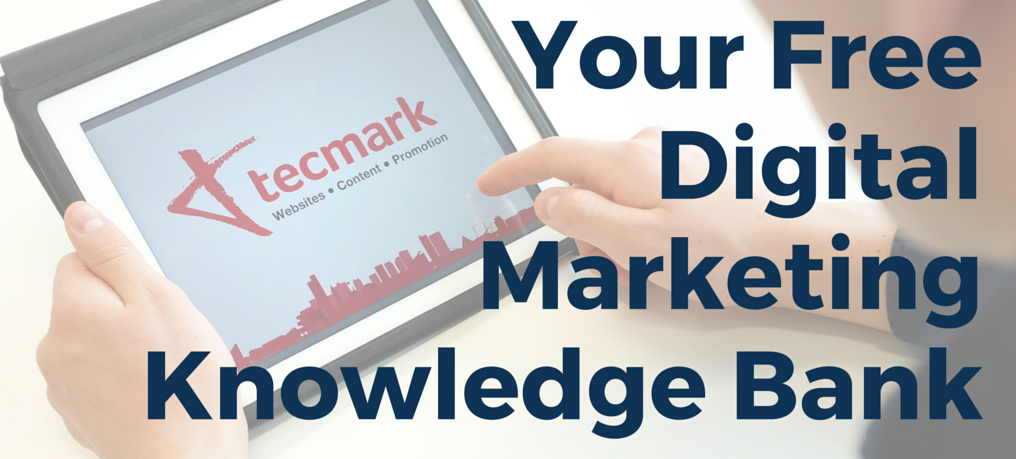Improve your Conversion Rate: 6 Simple Tips
There can be a variety of reasons for a website to exist, whether that’s because you’re selling a product, service or providing information. There has to be a purpose and focus in how you get that information across so that, first of all, users find your website and secondly, they convert.
You can achieve this through a combination of factors e.g. through optimising your page titles, meta descriptions and ensuring on site content is targeted to both your audience and to search engine crawlers or creating a successful blog but once traffic starts to land on your website, what happens next?
Your particular conversion requirements may differ from other sites but most sites aim to:
- Convert visitors to buying a product or service.
- Convert visitors to new business leads via direct contact.
- Convert visitors into browsing users or members.
All of these points require your website to engage with your customers and there are many ways to achieve this.
Content Language
Language is a huge motivator and when used well has spectacular results. When you’re writing the content for your website you need to consider two main areas.
The first is the type of language you’re using. Does it engage the reader? Using words that talk to your reader such as “you or you’re” helps to develop an emotional connection. This allows customers to associate themselves with the product or service.
| Grab your copy of our free e-book. |
Using a line such as this, gives the product a direct connection to the customer. It’s yours!
The second and most importantly is ensuring that the terminally you’re using suits the target audience. You need to consider the education level of your visitors. Using technical language is often off putting to most users, unless, your target audience knows in-detail what your offering. Using Customer Personas is a great way to help get your content right.
Benefits of your Service/Product
| What are the benefits? |
That’s the question your customers are asking when they’re looking at your service or product.
Where does your product sit in the market, who is the competition? Answering these questions and specifying how your product is better will help to boost conversions.
Most customers are looking for the best deal and that’s not always the price. Sometime, if your product/service does something extra, is simpler, faster or designed better it’s a better deal. Make sure they know.
Call to Actions (CTA)
Adding a Call To Action (CTA) to your website is a topic which is spoken about all the time. They’re a critical component of your website’s lead generation process. Without CTAs people visiting your website may find it hard to find out what your offering and how they can find out more or even better give you some money.
There are many different types of CTAs, some are big and in your face, others can be small and subtle. Nevertheless, adding a range of CTAs will really help with your conversions, just make sure your tracking their impact.
Along with tracking your CTA using tracking tools such as Google Analytics you should be experimenting with them. Alter their position, change their size or refresh their content. A/B testing, which we will discuss later, will really help you to find what converts best.
Reduce Form Fields
We all hate having to fill out long complicated forms online. In most cases these forms qualify as a conversion. Sending an email, sign up to a newsletter service – these are all conversion factors.
Making these forms easy, and quick is vital. The fast they are to complete the most likely users will. It’s also important to make them easy to fill out, help users with the process and perform validation as they progress down the form. This prevents users feeling frustrated when pressing that all important submit button only to find out something’s not right.
This consideration for time and convince will do wonders for your conversion and will lead to greater numbers of conversions using your forms.
Recommended Services or Products
One element that is often overlooked in website design, particularly with websites producing engaging blog content is recommended services or products.
Its great, your blog and pages are attracting users but why not convert them. It likely that they came to your website for one reason or another so help them out. Adding a “recommended” section to these landing pages can help keep users on your site and can lead to conversations.
If your page or post talks about how your product help solve a problem it only makes sense to provide more information about it. This increases the chances of a conversion.
A/B Testing
A/B testing or split testing is process of comparing two versions of a webpage against one another with the goal of determining which of the two works best. In this case which has the best conversion rate.
A/B testing is a powerful tool which will allow you to refine your CTAs, page layout or messaging. Making some changes to a website can have a huge impact on its performance. Altering one or more of these items and testing it against a ‘control’ (an unaltered version) will help you to understand the impact of the changes.
Monitoring is key with A/B testing and it’s important to have a clear goal of what your testing. Are you wanting people to click a button, read more of the pages content, submit a form? Once you know this, you can add relevant tracking and in no time your getting results.
If you would like to know more about A/B testing there’s a great introduction to the topic on the Optimizely website.
The Round Up
There are many different ways to help improve your website’s conversions and meet your sites goals. One of the most important parts in knowing your customers and their needs.
Tailor the websites content and engagements to meet these needs and your off to a good start improving the conversion rate. It’s also important to understand that not everything going to work first time or have a same impact as something else.
Testing what works and what doesn’t is critical to making sure you’re getting the most out of your visitors. Different things will work for different people and in different situations.
Knowing these two main points is a great starting point and with time will come great results.

Get 123 pages of expert advice straight to your inbox.
-
Apps (46)
Content Marketing (67)
Digital PR (1)
Integrated Marketing (3)
Multi Screen (12)
News (99)
PPC (2)
Search (120)
Tecmark (70)
Uncategorized (2)

About the Author


